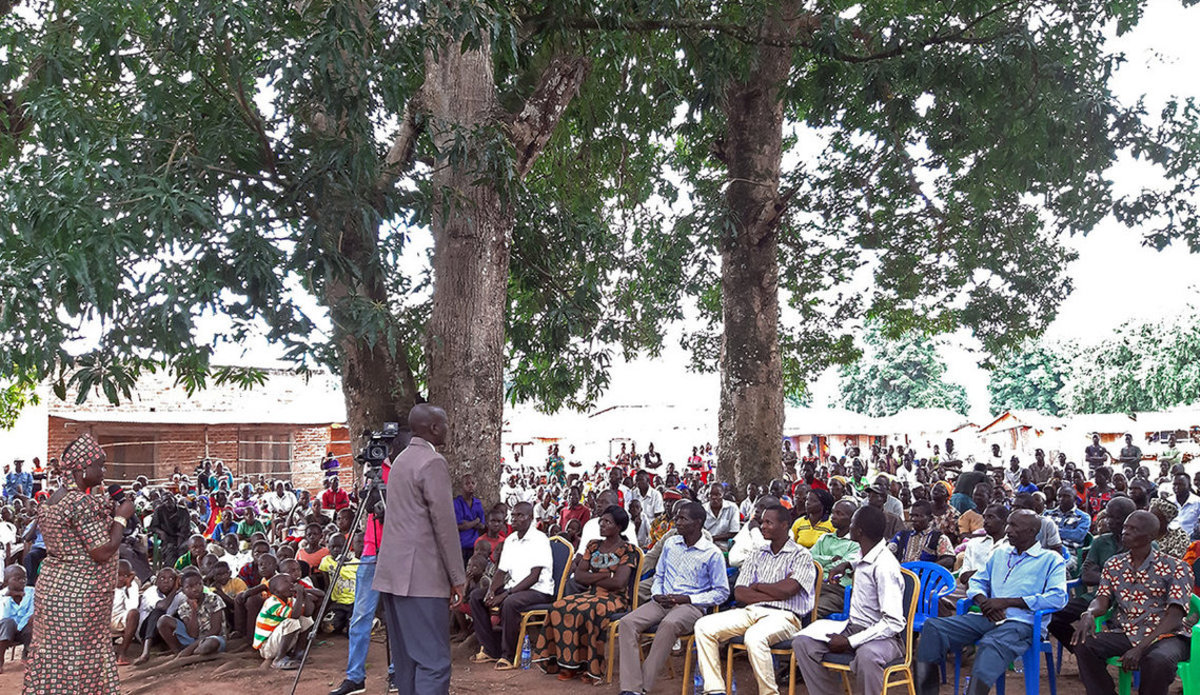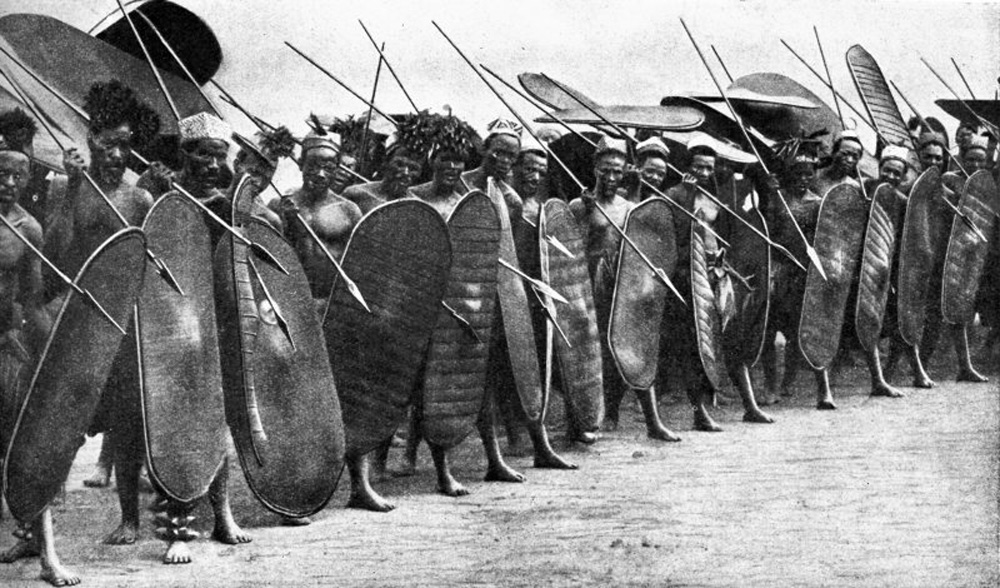
Azande
An overview of the sequence of events leading to the rise of the Avongara dynasty is here provided in an attempt to highlight the role played by the Azande public in this dynastic change. Except for the Avongara dynasty, not much is known about what caused the rise and collapse of previous dynasties. Ngara was the last supreme ruler of the Abakundo dynasty which preceded that of the Avongara. Ngara ruled with a heavy hand and his reign was further characterized by the complete collapse of the judicial system.
.jpg)
After several generations, the Azande kingdom began to expand during the reign of Ngura, a descendant of Basanginonga. The expansion was brought about both by assimilation of neighbouring tribes as by conquest.
An important point here is that new territories acquired during the expansion were not brought under direct rule from a particular centre of authority.
According to unofficial information circulating in Yambio, a single supreme
monarch for the Azande will soon be crowned. The timing of this singular event is
deliberately calculated to coincide with the 100th anniversary or the now famous
“centenary” of the arrival of the first Christian missionaries to Zandeland in 1908-
1912. Reliable information has it that the process is spearheaded by gurus in the
WES government, the local hierarchy of the Catholic Church and the Chairman of
the Traditional Authority in WES.

“To date, we the chiefs of Ezo County and most of our prominent
leaders and elders have heard this story only as rumours”, claimed Anthony Ture,
the Paramount Chief of Ezo. “We have no full information about whatever the
people in Yambio are planning about a king”, he laments.

In the democratic era, any decision to appoint a supreme monarch for all Azande
cannot and must not be the prerogative of a few secretly self-appointed persons.
The idea must be open to a nationwide debate. It must be transparently studied
taking into serious consideration the historical, cultural and socio-political
connotations and the socio- economic implications as well. So, all issues (social,
political, cultural, etc) that demand for the establishment of the supreme monarch
must be open to debate.

Evolution of the Azande kingdoms and the rise of the Avongara dynasty
There is sufficient evidence based on Zande legends to show that several clan
dynasties ruled the Azande community at different epochs. The three most recent
of the Azande dynasties are the Angbapio dynasty, the Abakundo dynasty and
the current Avongara dynasty. Except for the Avongara dynasty, not much is
known about what caused the rise and collapse of previous dynasties

Ngara was the last supreme ruler of the Abakundo dynasty which preceded that
of the Avongara. Ngara ruled with a heavy hand and his reign was further
characterized by the complete collapse of the judicial system. The consequent
general discontent throughout the kingdom eventually led to the emergence of
Basanginonga from the Akurangbo clan.
Basanginonga challenged Ngara to a
duel in the course of which he defeated Ngara and bound him up. Following this
victory, Basanginonga became the supreme ruler. He was given the name
“Vongara” – the man who bound up Ngara. This is how the Abakundo dynasty
ended.

These conditions must have
included steps to prevent any future return to the previous era of bad governance
and absence of the rule of law which characterized the regime of the Abakundo
under the tyrant, Ngara.

After several generations, the Azande kingdom began to expand during the reign
of Ngura, a descendant of Basanginonga. The expansion was brought about both
by assimilation of neighbouring tribes as by conquest. An important point here is
that new territories acquired during the expansion were not brought under direct
rule from a particular centre of authority.

On the contrary, an Avongara price
would be dispatched to the newly acquired territory to establish an autonomous
Azande kingdom there. To guarantee Azande unity, the autonomous kingdoms
normally cooperated among themselves, although many a time feuds and
frictions characterized relationship between the various Azande kings. It is clear
that the system of government adopted by the Azande was the decentralized
system but unity of the tribe was guaranteed by the one-clan rule of the
Avongara.

Unity ensured collective defence to protect the territories and interests
of all Azande, while decentralization was adopted to minimize the feeling of Zande
domination especially in the newly acquired territories, thus catering for peculiar
and divergent socio-cultural interests of the assimilated communities.

Decline of the Avongara rule
By the end of the 19th century, when European colonialists reached Zandeland,
several autonomous kingdoms were in existence. Some of the most prominent of
these were: the kingdoms of Tamburo, Ezo and Gbudue which eventually were to
fall under British dominion in Sudan; the kingdoms of Ndoromo, Wandu and Ngima
which fell to the Belgian Congo; and the kingdom of Kipa that fell into French
Equatorial Africa. However, parts of the Zande territories, such as the chieftainship
of Mange, were still under the process of assimilation when the colonialists arrived.

After taking control, the colonialists, who had faced the ferocity of Azande
collective resistance against colonialism under the leadership of their kings,
decided to do away with the Azande kingdoms. Everywhere, they tactfully divided
up the kingdoms into several less powerful chieftainships each directly answerable
only to the colonial administration at the local level. In this way, although the
Avongara dynasty still remained in power, this single important action by the
colonial powers thereafter rendered the Azande kingdoms powerless.

After independence, other political factors continued to marginalize and diminish
the authority of the Avongara chiefs. In the Sudan for instance, the Abud regime,
which came to power immediately after independence, tried to empower the
chiefs but mainly so that they could become vehicles for the spread of Islam. The
move towards Islamisation was rejected by the Azande hence further
marginalizing those chiefs who converted to Islam
.jpg)
The chiefs became even more
marginalized during the 15 years of Numeiri regime because the chiefs’ roles at the
grassroot level were taken away and assigned to the basic units of the SSU leaving
chiefs with little function in society. During the last 15 years of the liberation struggle
in South Sudan, Zandeland was fully under SPLA control.

But although Dr. John
Garang went out of his way to empower the chiefs, real power at the grassroot
level wasretained by the local army commanders, hence the chiefs’ roles in society were
almost obsolete.

